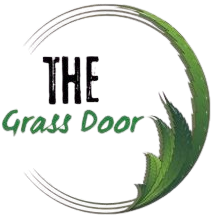What are Cannabis Use Disorder Symptoms?
Cannabis use disorder (CUD) is a condition that mainly occurs due to excessive cannabis intake. This can be further classified into three categories: mild, moderate, and severe.
To be diagnosed with CUD, one must have at least two of the 11 symptoms that the DSM-5 sets forth. Cannabis use disorder is believed to impact at least 10% of the total cannabis users. This can be divided into two categories, namely, cannabis abuse and cannabis dependence. In most cases, cannabis users remain unaware of the fact that they are shifting from recreational use to mild, moderate, and severe cannabis use disorders.
About Cannabis
Cannabis is a plant of the Cannabaceae family that contains psychoactive elements or biologically active compounds. THC and CBD are the most potent compounds found in cannabis plants. With the current rise in cannabis usage post-Farm Bill Act 2018, we have seen the emergence of synthetic cannabinoids, which are produced to replicate individual compounds found in cannabis and are more harmful since they are more potent than the natural compounds found in cannabis plants.
Early Symptoms Of Cannabis Use Disorder
The Diagnostics and Statistical Manual of Mental Disorders, DSM-5, states that to be qualified as a patient with a cannabis use disorder, one must have had at least two of the following symptoms in the last 12 months:
- Higher cannabis consumption than intended.
- Continuous efforts at quitting, however, failed each time.
- Increasing craving for cannabis and high-time utilization of cannabis products.
- Neglecting social life.
- Continuous usage despite facing social issues.
- Neglecting social gatherings, not attending essential functions, or giving up on crucial activities due to cannabis usage.
- Usage of cannabis while involved in high-risk activities like driving, riding, etc.
- Usage of cannabis despite having certain physical or mental conditions.
- Unable to withdraw due to an increased tolerance level.
- Increased dosage due to increased tolerance.
- Increase in time spent to procure, consume, and recover from the effects of cannabis.
How increased THC concentration affects cannabis use disorder
THC is a biologically active compound that’s found in a cannabis plant. The level of concentration defines the scale of photoactive reactions in users. In most of America, any cannabis-derived product that has 0.3% or less THC concentration is termed legal or recreational cannabis.
Over the last few years, we have seen products emerging with high THC levels, which increases the chances of more prolonged effects on the brain and higher chances of intoxication and overconsumption. THC, also known as delta-9-tetrahydrocannabinol, produces psychoactive effects. THC consumption helps release dopamine, which hyperactivates one’s brain and makes a user addicted to it.
Treatment of Cannabis Use Disorder DSM-5
Cannabis use disorder most often doesn’t require any medical attention and can be self-treated; however, one may be assisted with supportive treatment like therapies and motivational support to help overcome any cannabis use disorder (DSM-5).
Behavioral therapies, contingency management, and cognitive behavioral therapies are some of the most common practices that help one with cannabis use disorder (DSM-5).
While these treatments don’t assure any cure or change, they certainly help users get out of any such addiction. One should be mentally prepared or take a willing approach towards quitting the usage.
In case you know someone who needs help, you can also contact SAMHSA’s National Helpline or call +1 800-662-HELP (4537) .




